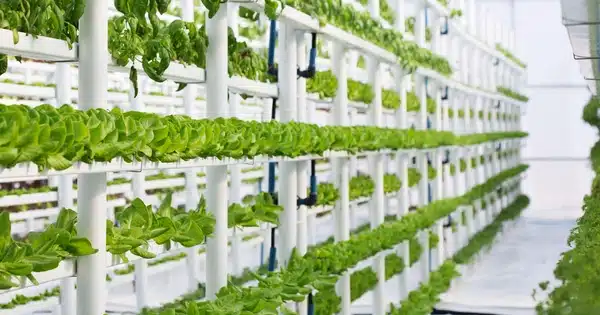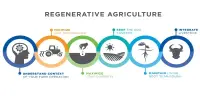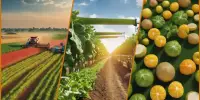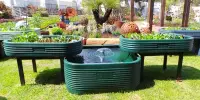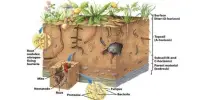Hydroponics is a subset of hydroculture that involves growing plants, typically agricultural or medicinal plants, without soil using water-based mineral fertilizer solutions. It is a method of producing plants that do not require soil and in which plants obtain their nutrients and water straight from a nutrient-rich water solution. This gardening method has grown in favor due to its capacity to conserve water, optimize fertilizer delivery, and allow for year-round crop production.
Plants can grow with their roots exposed to the nutritive liquid or with their roots mechanically supported by an inert material such as perlite, gravel, or other substrates. Despite inert media, roots can cause rhizosphere pH changes, and root exudates can alter rhizosphere biology and the physiological balance of the nutrient solution via secondary metabolites. Transgenic plants cultivated hydroponically allow medicinal proteins to be released as part of the root exudate into the hydroponic medium.
Here are some key aspects of hydroponics:
- Growing Medium: While hydroponics does not require soil, a separate growing media is often used to support the plant’s root system. Coconut coir, perlite, vermiculite, rockwool, and other inert materials are common growing mediums.
- Nutrient Solution: Hydroponically produced plants obtain critical nutrients dissolved in water. These nutrients are precisely measured and managed to ensure that the plant receives what it requires for optimal growth. Typically, the solution contains both macronutrients (such as nitrogen, phosphorus, and potassium) and micronutrients (such as iron, calcium, and magnesium).
- Water Conservation: Water efficiency is well-known in hydroponic systems. Because the water in the system is recirculated and can be reused, they consume substantially less water than traditional soil-based farming.
- Controlled Environment: Hydroponic systems can be set up indoors or in greenhouses, allowing growers to control environmental factors like temperature, humidity, light, and CO2 levels. This control enables year-round cultivation and can result in higher crop yields.
Types of Hydroponic Systems
There are various types of hydroponic systems, including:
- Drip System: This system delivers nutrient solution directly to the base of each plant using tubes and pipes.
- Nutrient Film Technique (NFT): In NFT, a thin film of nutrient solution flows along a sloped channel, and plant roots grow down into this film.
- Aeroponics: In aeroponics, plant roots are suspended in the air, and a nutrient mist is periodically sprayed onto the roots.
- Deep Water Culture (DWC): DWC involves suspending plant roots in a nutrient solution, with air stones providing oxygen to the roots.
- Wick System: The simplest form of hydroponics, the wick system relies on a wick to draw nutrient solution from a reservoir to the plant roots.
Crop Selection
Hydroponics can be used to cultivate a variety of crops such as vegetables, herbs, and some fruit species. Hydroponic farming is ideal for leafy greens like lettuce and herbs like basil. While hydroponics has numerous advantages, it also has drawbacks such as the initial setup cost, the necessity for careful nutrient management, and the possible vulnerability to system failures such as pump breakdowns.
Hydroponics is a versatile and innovative agricultural method that is commonly used in urban farming, research, and commercial greenhouse operations. It enables effective and sustainable crop production in a variety of conditions, making it an appealing choice for modern agriculture.
